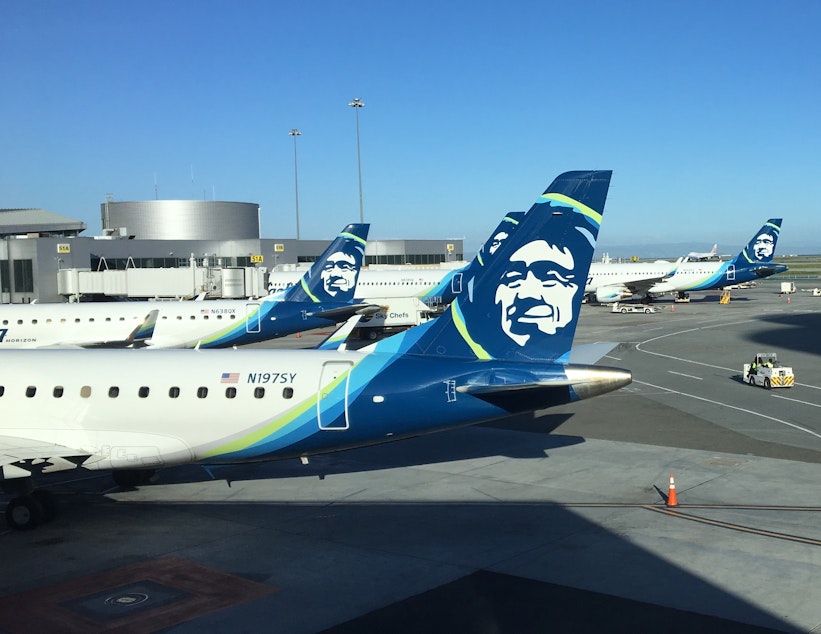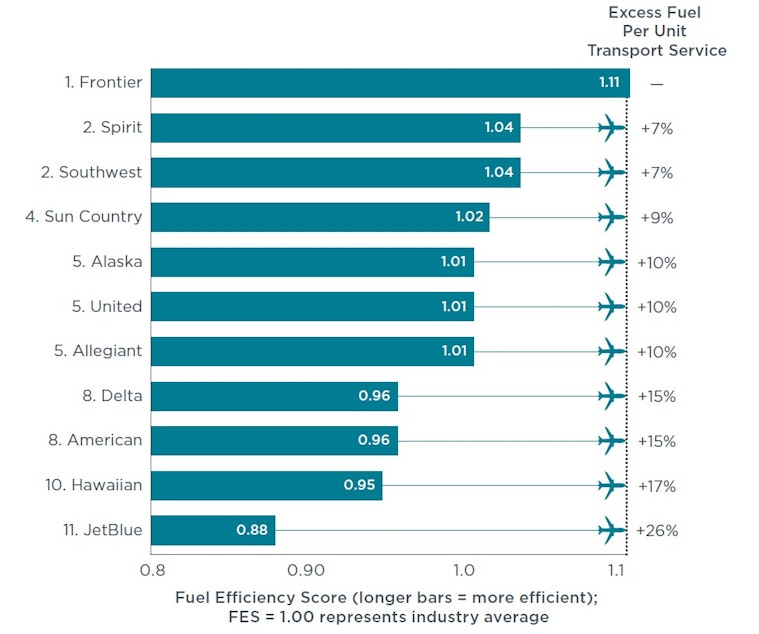Alaska Airlines loses climate friendly(ish) crown to Frontier

Seattle-based Alaska Airlines used to be the least-polluting domestic airline. Not anymore.
For years, flying on an Alaska flight pumped less exhaust into the sky and did less harm to the climate than flying on other airlines.
The nonprofit International Council on Clean Transportation has tracked airlines' climate performance since 2010.
Alaska always led the pack—until this year.
No-frills airline Frontier Airlines is now your lower-carbon choice, as judged by jet fuel consumption per passenger mile. Occupying a seat on a Frontier flight in 2018 sent 10 percent less jet exhaust into the sky than on an Alaska flight and 26 percent less pollution than a seat on the dirtiest domestic airline, JetBlue.

“When we got the results, we were a little bit disappointed to see that Alaska slipped four ranks, from number 1 to number 5, this year,” said Sola Zheng, lead author of the nonprofit’s latest rankings.
Zheng said Alaska slipped due to its purchase of Virgin America, with its fleet of older, more-polluting planes. Before being swallowed by Alaska in 2016, Virgin had the nation’s most polluting domestic fleet.
Alaska’s increasing use of jets, instead of propeller planes, for its short, Horizon Air flights also worsened its climate impact.
An Alaska Airlines spokesperson declined to comment.
Even with its poorer pollution performance, Alaska remains slightly better than the industry average, according to the new rankings.
Alaska was planning to improve the fuel efficiency of its fleet by buying a reported 32 Boeing 737 Max jets. That order has been put on indefinite hold after two fatal crashes led those planes to be grounded around the world.
While some planes pollute more than others, all jet travel is rough on climate. Short of having one fewer child, avoiding a long-distance plane trip is the biggest single step a typical American can make to reduce their personal climate impact.
In addition to the usual harm that combustion engines do by turning fossil fuel into heat-trapping carbon dioxide, airplane exhaust also creates contrails: wispy, linear clouds that trap even more heat than the exhaust’s carbon dioxide does.
Unlike cars, airplanes’ fuel efficiency is unregulated in the United States. The Trump administration has delayed the Environmental Protection Agency’s efforts to regulate airplane fuel use—and the damage it does to the climate.
U.S. airplanes put out seven times more carbon dioxide each year than planes from the world’s next largest polluter, China, according to the EPA.
Still, choosing one airline over another can reduce the climate impact of a given itinerary by as much as 26 percent. Choosing the most efficient jets an airline flies can help, too, but that information can be hard to find.
“We like to tell people that they should fly like a nerd,” Zheng said. “N-E-R-D.”
- Newer aircraft. Older planes are generally more polluting.
- Economy class. A first-class seat can have three times the impact of an economy seat.
- Regular flights, not short puddle jumps. Short flights are the most energy-intensive and the easiest to replace with other modes of travel.
- Direct flights, not flights with layovers. Planes burn the most fuel when they are taking off, and each layover means another takeoff.
The average commercial jet has been getting more fuel efficient, about 1.5 percent a year in the United States, according to the ICCT. But air travel here has grown three times as fast, and the industry’s overall fuel use—and climate impact—has increased as a result.
Last year, domestic airlines burned 12.5 billion gallons of jet fuel last year, up 17 percent since 2009.
Alaska announced an initiative in September to encourage passengers to bring their own water bottles on flights to reduce plastic waste.




